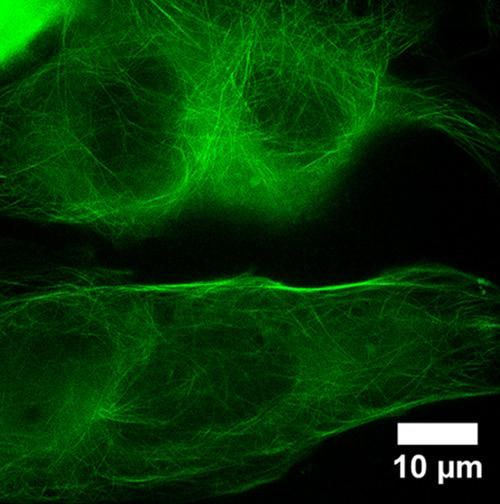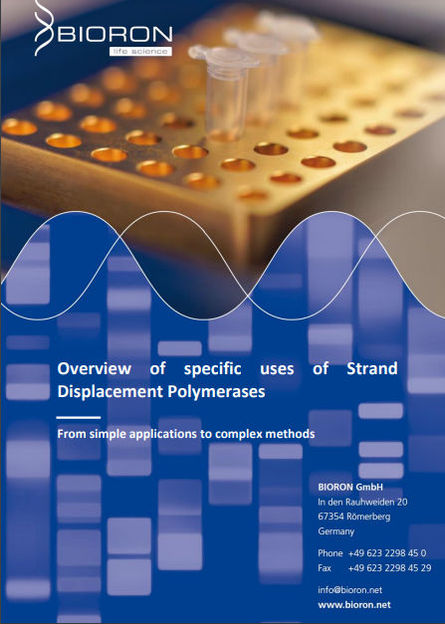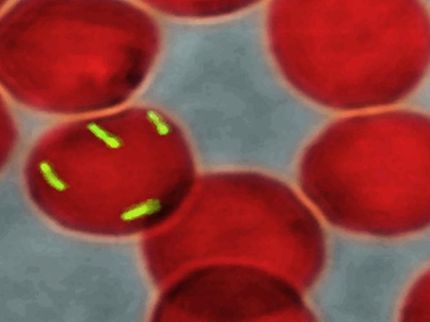New palm-sized microarray technique grows 1,200 individual cultures of microbes
A new palm-sized microarray that holds 1,200 individual cultures of fungi or bacteria could enable faster, more efficient drug discovery, according to a study published in mBio®, the online journal of the American Society for Microbiology.
Scientists at the University of Texas at San Antonio and the U.S. Army Institute of Surgical Research at Fort Sam Houston have developed a microarray platform for culturing fungal biofilms, and validated one potential application of the technology to identify new drugs effective against Candida albicans biofilms. The nano-scale platform technology could one day be used for rapid drug discovery for treatment of any number of fungal or bacterial infections, according to the authors, or even as a rapid clinical test to identify antibiotic drugs that will be effective against a particular infection.
"Even though we have used the antifungal concept for development, it is a universal tool," says co-author Jose Lopez-Ribot of the University of Texas at San Antonio. "It opens a lot of possibilities as a new platform for microbial culture. Any time you need large numbers of cultures, this has a big advantage over other methods."
"The possibility exists to use this same technology for pretty much any other organism," he says.
Microbiology and medicine have become increasingly reliant on micro- and nano-scale technologies because of the increased speed and efficiency they can offer, but until now the cultivation of microorganisms has mostly been conducted on larger scales, in flasks and in trays called micro-titer plates. The microarray technology enables the user to rapidly compare hundreds or thousands of individual cultures of bacteria or fungi, a big benefit in the search for new drugs to treat infections. And like many nano-scale techniques, the nano-culture approach described in the mBio® study is also automated, a feature that saves time, improves reproducibility, and prevents some types of user error.
To test the technique, the authors embedded cells of the opportunistic pathogen C. albicans in each of the 1,200 tiny dots of alginate on the surface of the microarray. Under the microscope, these nano-biofilms of C. albicans, each of which was only 30 nanoliters, exhibited the same growth habits and other outward characteristics as conventional, macroscopic biofilms, and achieved maximum metabolic activity within 12 hours. The tiny cultures were then treated with a wide range of candidate drugs from the National Cancer Institute library, or with different FDA-approved, off-patent antifungal drugs in combination with FK506, an immunosuppressant, for identifying individual or synergistic combinations of compounds effective against biofilm infections. Co-author Anand Ramasubramanian of the University of Texas at San Antonio says that the tests prove the utility of the technology in screening combinations of drugs.
"The antifungal screening results were similar to results in larger macroscale techniques. That gives us confidence that it could be used as a tool to replace existing techniques," says Ramasubramanian.
Going forward, Ramasubramanian says he and his colleagues are testing the microarrays with polymicrobial cultures - mixtures of fungi and bacteria - to see whether the technology can be used to explore treatments for mixed infections. They are also exploring clinical applications for the technique, testing patient samples against an array of drugs or combinations of drugs to develop tailored therapies.
Lopez-Ribot says their microarray technique is just the latest development in a decades-long trend toward the tiny in science. "Things are moving toward smaller scale, more powerful techniques. You don't need millions of cells for these assays like we used to - maybe a few cells will do."
Other news from the department science

Get the life science industry in your inbox
By submitting this form you agree that LUMITOS AG will send you the newsletter(s) selected above by email. Your data will not be passed on to third parties. Your data will be stored and processed in accordance with our data protection regulations. LUMITOS may contact you by email for the purpose of advertising or market and opinion surveys. You can revoke your consent at any time without giving reasons to LUMITOS AG, Ernst-Augustin-Str. 2, 12489 Berlin, Germany or by e-mail at revoke@lumitos.com with effect for the future. In addition, each email contains a link to unsubscribe from the corresponding newsletter.
Most read news
More news from our other portals
Last viewed contents
Basal_plate_(neural_tube)
Pennaceous_feather

Characterizing Viral Vector Fullness in Density Gradient Separations
Potassium_sorbate
Shass_pollak
Amico_Laboratories
List_of_EC_numbers_(EC_4)
King_Cobra

HyPer-Tau provides spatially-resolved hydrogen peroxide sensing in cells




















































